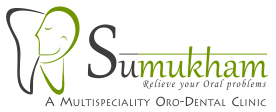Geriatric dentistry is the branch of dentistry concerning with the prevention, diagnosis and treatment of dental problems in older people. As age progresses, these persons might have many issues, which can lead to many problems if not treated. One of the such problem is the presence of root caries & attrition.
Root caries: This problem is caused due to the infections, which can be caused due to bacterial proliferation and associated damage. The food debris, if kept for a long time can be subjected to fermentation by bacteria. This fermenting effect results in the production of acid, that can damage the tooth structure. The presence of root caries is considered as one of the common disorders throughout the world.
There are many people who are not aware if they have root caries or not. The prime reason behind this is because such a condition occurs below the gum line. In addition to this, the warning signs may not be present so that people can diagnose the issue. The presence of root caries, in most cases, is found out by a dental professional. In diagnosing such a problem, imaging tests like X-rays, OPG etc can be really helpful.
Attrition: In geriatric dentistry, attrition means tooth loss that occurs due to the negative effect of the mechanical forces exerted by the opposing teeth. Initially, this phenomenon is said to affect the enamel first. As time progresses, this phenomenon occurs to the other portions of the tooth/set of teeth.
Some of the warning signs of this phenomenon include the following:
- Back teeth flattening.
- Front teeth shortening.
- Increased wear & tear.
- General increase in tooth sensitivity.
As mentioned before, the main cause dental attrition is bruxism (teeth grinding). This happens when there is continuous contact behind the opposing teeth. This results in a high pressure experienced by the teeth. Another causative factor is clenching, which is the phenomenon in which the teeth gets squeezed together. The phenomenon of parafunctioning can increase the wear & tear of the teeth. This mainly occurs during the sleeping hours, where the patient is unconscious.
There are many conservative measures that can minimize this disorder:
- The patient can be advised to avoid excessive gum chewing.
- If the patient has the habit of consciously chewing the gum, then he/she might be advised to reduce this habit significantly.
- Parafunctioning may be the result of many factors. Some of these factors include tension, bite discrepancies, neurological trait etc.
- Consultation with a dental professional shall help in suggesting measures that are related to individual constitution.
- Other causative factors like abrasion & erosion needs to be minimized.
